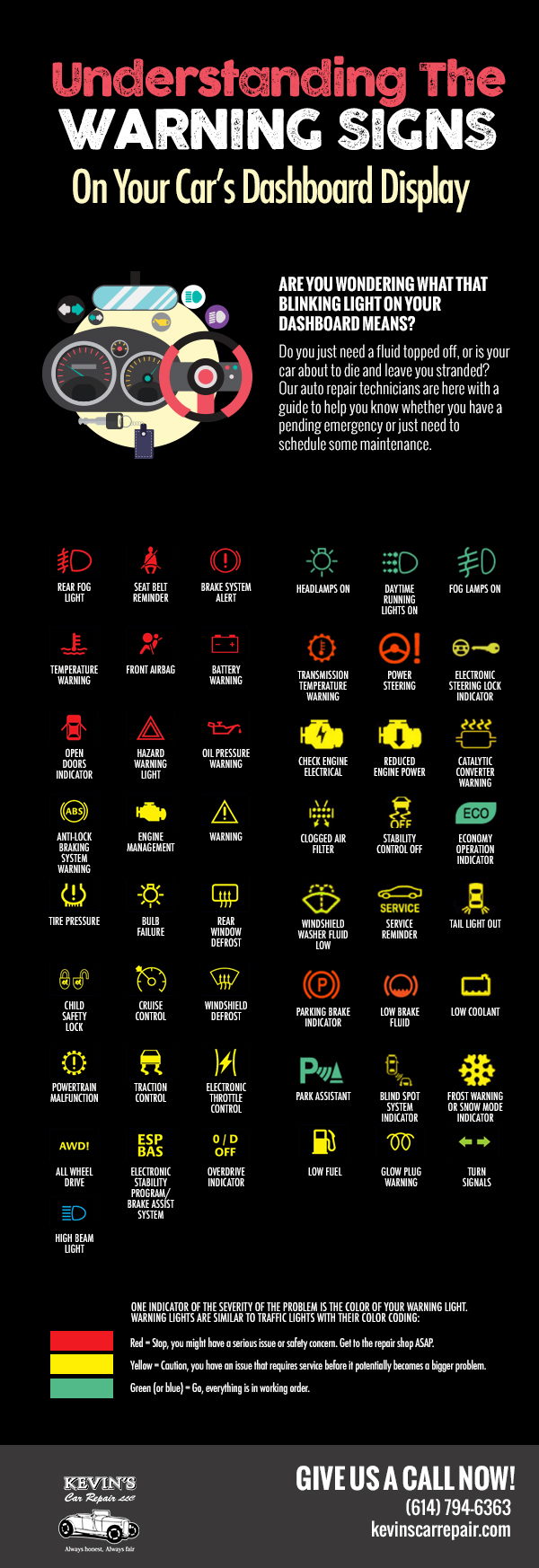Recognizing Your Automobile'S Caution Lighting: What Do They Actually Mean?
Recognizing Your Automobile'S Caution Lighting: What Do They Actually Mean?
Blog Article
Produced By-Hernandez Crawford
When you're behind the wheel, those glowing warning lights on your dashboard can be a bit bewildering. Do you understand what they're trying to inform you concerning your cars and truck's health? Comprehending the relevance of these lights is essential for your security and the durability of your car. So, the next time among those lights appears, wouldn't you wish to understand its message precisely and take the needed actions to resolve it?
Common Warning Lighting and Interpretations
Identify typical warning lights in your automobile and comprehend their significances to ensure secure driving.
The most common caution lights include the check engine light, which indicates concerns with the engine or emissions system. If this light comes on, it's vital to have your car inspected promptly.
The oil pressure warning light suggests reduced oil stress, needing instant focus to avoid engine damages.
pro-tech flashing battery light could suggest a damaged charging system, possibly leaving you stranded otherwise dealt with.
The tire stress tracking system (TPMS) light informs you to reduced tire stress, affecting automobile security and fuel effectiveness. Ignoring this can result in risky driving conditions.
The abdominal light indicates a trouble with the anti-lock braking system, compromising your ability to quit rapidly in emergency situations.
Finally, the coolant temperature level warning light warns of engine getting too hot, which can lead to severe damage if not resolved swiftly.
Comprehending these common warning lights will certainly help you resolve problems quickly and keep secure driving problems.
Importance of Prompt Attention
Comprehending the typical caution lights in your car is only the very first step; the value of promptly addressing these warnings can't be highlighted sufficient to ensure your safety and security when traveling.
When a caution light brightens on your control panel, it's your cars and truck's method of interacting a possible issue that needs interest. Overlooking these cautions can lead to more severe troubles down the road, endangering your safety and security and possibly costing you a lot more out of commission.
visit the following website page to alerting lights can prevent malfunctions and accidents. As https://oil-change-prices17395.onzeblog.com/27706462/crucial-details-for-browsing-the-world-of-car-fixing-shops , a flashing check engine light might indicate a misfire that, if left ignored, might create damages to the catalytic converter. Resolving this immediately can conserve you from an expensive repair.
Likewise, a brake system alerting light could signal low brake liquid or worn brake pads, vital elements for your safety and security when driving.
DIY Troubleshooting Tips
If you see a caution light on your dashboard, there are a few do it yourself fixing ideas you can try before looking for expert aid.
The first step is to consult your vehicle's guidebook to comprehend what the particular caution light indicates. Sometimes the problem can be as basic as a loosened gas cap activating the check engine light. Tightening up the gas cap may fix the problem.
Another typical problem is a low battery, which can activate different advising lights. Examining the battery connections for deterioration and ensuring they're safe and secure could repair the problem.
If a warning light lingers, you can attempt resetting it by disconnecting the automobile's battery for a couple of mins and afterwards reconnecting it. In custom exhaust systems , checking your car's fluid levels, such as oil, coolant, and brake liquid, can help repair advising lights connected to these systems.
Conclusion
Finally, recognizing your vehicle's caution lights is crucial for maintaining your lorry running smoothly and safely. By promptly addressing these informs and knowing what they imply, you can prevent pricey fixings and prospective failures.
Remember to consult your car's guidebook for specific details on each cautioning light and act as necessary to guarantee a trouble-free driving experience.
Keep notified, remain safe on the road!
